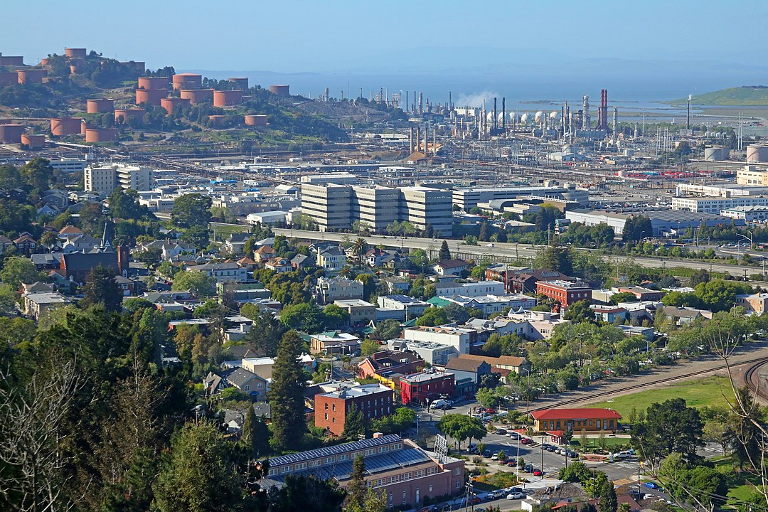As our nation searches its soul for a response to racial injustice in policing, it must also reckon with profound environmental injustice. New research shows that a handful of egregiously polluting facilities account for the vast majority of toxic releases and that a disproportionate share of these facilities are located near black and brown neighborhoods.
Too often people in low-wealth communities and communities of color live, work, or attend school near sources of harmful environmental contamination – factories and power plants, highways and congested roads, lead-contaminated buildings and hazardous waste sites. The impacts of this toxic exposure are compounded by inadequate healthcare, limited access to healthy foods and underlying health conditions, such as asthma. Worse, Covid-19 imposes a disproportionate burden of illness and death on racial and ethnic minority groups, which is worsened by these groups’ long-term exposure to air pollution.
It is well known that proximity to toxic facilities is a major source of harm to such communities. And a handful of egregiously polluting facilities account for the vast majority of toxic releases. Studies have long found eye-popping examples of this pattern in individual sectors or areas. Two industrial sectors — chemicals and primary metals — produce 60% of all U.S. toxic emissions, but only 5% of GNP and 1.4% of jobs. A third of U.S. toxic air releases in 2014 came from just 100 complexes. And data from 16,000 facilities shows that 90% of toxic contamination comes from 5% of facilities.
Now the first comprehensive study of nationwide toxic releases from 25,000 facilities in 322 manufacturing industries finds the same distribution pattern in a wide range of industries. The study found 1116 egregious polluters — 4% of the total — each of which generates 50% of the total annual hazard from its industry. These super polluters produce hundreds or even thousands of times more toxins than comparable facilities.
Who bears the burden of these poisonous pollutants? The evidence is as clear as it is unsurprising: a disproportionate share of these super polluters operate near low-wealth communities and communities of color. So, in addition to the fact that such communities bear a disproportionate share of the overall burden, the inequities become more pronounced with the industry’s worst offenders, which affect these communities even more than might already be expected.
The study results confirmed the existence of what researchers term sacrifice zones: majority minority, low-income neighborhoods where super polluters operate below the radar, imposing enormous health burdens on populations with little power to resist. We know that environmental injustice is a legacy and a result of systemic racism. But it is even worse than we thought: a disproportionate share of the worst, most harmful pollution comes from a few sources that cynically exploit a legacy of racism and powerlessness to inflict devastating harm on vulnerable communities.
Researchers euphemistically refer to these sources as “toxic outliers.” It may not be too much to say that these are not outliers; they are part of a racist system that deprives black and brown people of health and opportunity. Collectively, they are carrying out a kind of slow-motion mass lynching of the powerless to save themselves a little money.
If EPA and states are serious about protecting the environment and promoting environmental justice, they should focus priority enforcement attention on these facilities. A robust regime of inspections and monitoring should help identify the worst polluters, and bring them to justice, while also greatly benefiting low-wealth communities and communities of color.
Teaser photo credit: By User:Audiohifi, CC BY-SA 3.0





